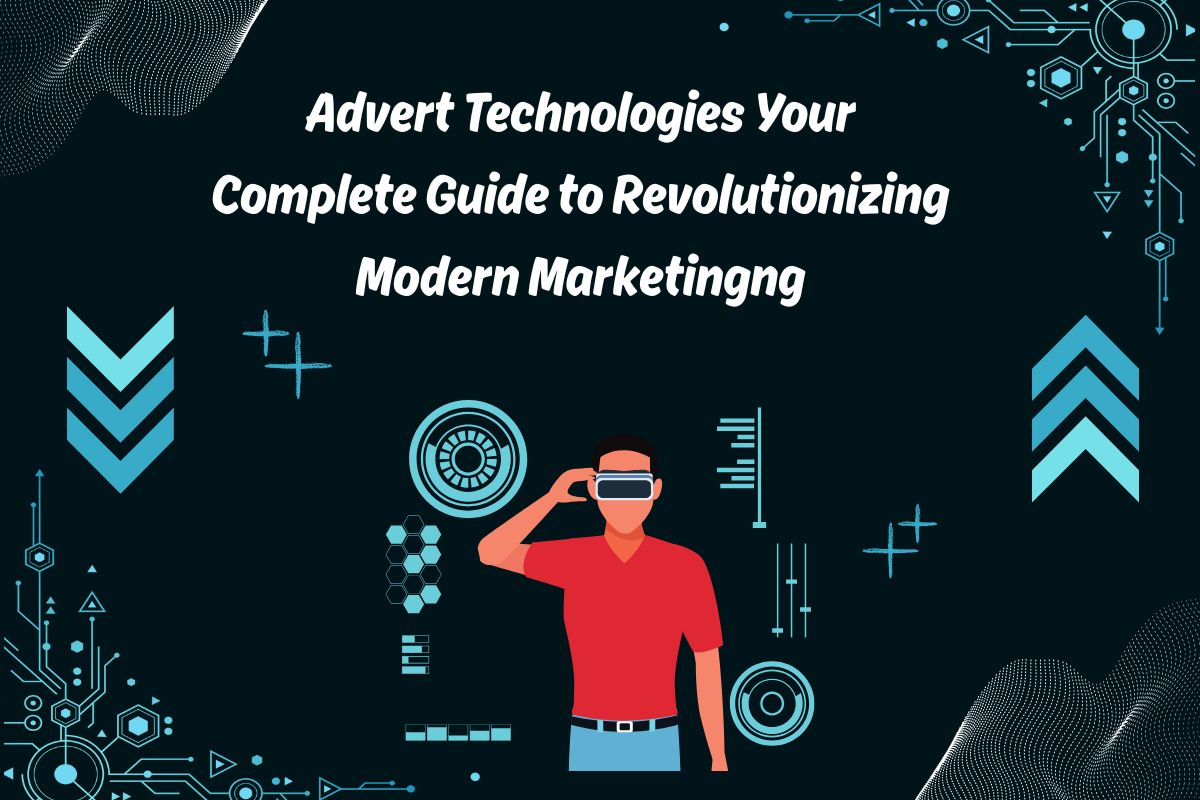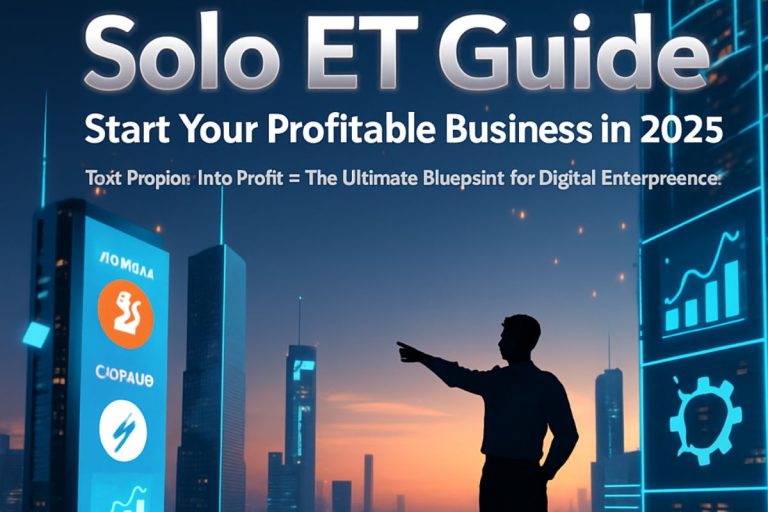Have you ever wondered how the ads you see online seem to know exactly what you’re interested in? Whether it’s a new pair of shoes you just searched for or a flight to a destination you’ve been dreaming about, these personalized advertisements aren’t magic. They are the result of a powerful ecosystem called Advert Technologies, or AdTech. This isn’t just for big corporations; it’s a game-changer for any business that wants to make an impact online. In this article, we’ll break down everything you need to know about AdTech in simple, easy-to-understand terms.
What Are Advert Technologies?
At its core, Advert Technologies is a collective term for the software, platforms, and tools that help advertisers and publishers manage the buying, selling, and displaying of digital advertisements. In simple words, it’s the technology that ensures the right ad is shown to the right person at the right time.
The world of AdTech is often confused with MarTech (Marketing Technology). While they both use technology to achieve marketing goals, their focus is slightly different:
- AdTech (Advertising Technology): Focuses on the paid media side, helping publishers sell their ad space and advertisers buy it.
- MarTech (Marketing Technology): Focuses on managing a company’s own marketing efforts and customer data, like email marketing, CRM, and content management.
Semantic Keywords: Digital advertising, online marketing, programmatic advertising, ad platforms, digital marketing tools.
PEOPLE ALSO READ : Blue Hill Technology Your Trusted Oracle Database Solutions & Digital Services Partner
Key Components of the AdTech Ecosystem
AdTech is a complex system built from several interconnected components. Understanding each part is crucial to grasping how the entire system works.
1. Demand-Side Platforms (DSPs)
DSPs are the tools for advertisers (the “demand” side). They allow businesses to buy advertising space across multiple websites and apps from a single platform. DSPs give advertisers the power to specify their target audience, budget, and bidding strategy, making the ad buying process highly efficient.
- Main Function: Enable advertisers to bid on and purchase ad inventory programmatically.
- Examples: Google Display & Video 360, The Trade Desk.
2. Supply-Side Platforms (SSPs)
SSPs are for publishers (the “supply” side). They help website owners and app developers sell their ad space to advertisers. The main goal of an SSP is to maximize the revenue a publisher earns from their advertising inventory by connecting them with as many potential buyers as possible.
- Main Function: Help publishers manage and sell their ad inventory to advertisers at the best possible price.
- Examples: Google Ad Manager, PubMatic.
3. Ad Exchanges
Think of an Ad Exchange as a digital stock market for ad space. It’s a transparent marketplace where publishers (via SSPs) list their ad inventory for sale and advertisers (via DSPs) come to bid on it. This is where the core of programmatic advertising happens in real-time.
4. Data Management Platforms (DMPs)
DMPs are crucial for data collection and organization. They collect and store large amounts of anonymous user data, such as browsing history, search queries, and location. This data is then segmented into audience groups, which advertisers can use to precisely target their campaigns without knowing who the users are.
- Main Function: Aggregate and segment anonymous third-party data to create audience profiles for targeting.
5. Customer Data Platforms (CDPs)
CDPs are more focused on a company’s own customer data known as first-party data. This includes personal information like names, emails, purchase history, and other details provided directly by the customer. A CDP unifies this data from various sources (e.g., website, CRM) to create a single, comprehensive customer profile.
- Main Function: Collect and unify first-party data to create detailed customer profiles for hyper-personalization.
Table: AdTech Components at a Glance
| Component | Function | For Whom? |
| DSPs | Buying Ads | Advertisers |
| SSPs | Selling Ad Space | Publishers |
| Ad Exchanges | The Marketplace | Both |
| DMPs | Anonymous Data | Advertisers |
| CDPs | First-Party Data | Marketers |
Export to Sheets
How Advert Technologies Work (A Step by Step Process)
Understanding the workflow helps demystify how AdTech operates behind the scenes. The entire process, from a user visiting a webpage to an ad being displayed, happens in milliseconds.
- User Data Collection: When you land on a webpage, ad tech tools instantly collect data about you, such as your location, device, and browsing habits.
- Ad Request: The webpage sends a request to an SSP, signaling that it has an ad space available.
- Bidding Process: The SSP sends this request to an Ad Exchange. At the same time, DSPs from various advertisers receive this information and, if you match their target criteria, they automatically place a bid on that ad space.
- Ad Display: The Ad Exchange identifies the highest bidder within milliseconds. The winning ad is then immediately displayed on the webpage you are viewing.
This entire process is called Real-Time Bidding (RTB). It’s an automated auction that ensures advertisers can bid for a specific ad impression the moment it becomes available, guaranteeing efficiency and effectiveness.
PEOPLE ALSO READ : Technology Hacks TGArchive Gaming Ultimate Guide to Gaming Excellence
Benefits and Challenges of Using AdTech
AdTech has transformed the digital landscape, but like any powerful technology, it comes with its own set of pros and cons.
Benefits:
- Precision Targeting: AdTech allows you to target your ads to a very specific audience based on their demographics, interests, and online behavior. This ensures your message reaches the people most likely to convert.
- Cost Efficiency: With programmatic buying, you only pay for the impressions that matter. You can set a budget and a maximum bid, ensuring you get the best value for your money.
- Data-Driven Decisions: Every aspect of an ad campaign is trackable. You get real-time data on performance, allowing you to optimize your campaigns for better results continuously.
- Global Reach: AdTech platforms give you access to a global audience, making it possible to run campaigns in multiple countries from a single dashboard.
Challenges:
- Privacy Concerns: With the collection and use of vast amounts of user data, there are significant privacy concerns. This has led to stricter regulations like GDPR and CCPA.
- Ad Fraud: Ad fraud involves fraudulent activities like bot clicks and fake impressions that waste advertisers’ budgets. While AdTech platforms have measures to combat this, it remains a persistent challenge.
- Learning Curve: The complexity of AdTech platforms can be intimidating for beginners. It requires a certain level of expertise to navigate and utilize these tools effectively.
Case Study: A Small Business Success Story
Company: “The Urban Bakery,” a small bakery specializing in gourmet cupcakes in a bustling city.
The Problem: The Urban Bakery relied on local foot traffic and struggled to attract online orders. Their digital marketing efforts were scattered, and they weren’t reaching new customers outside their immediate neighborhood.
The Solution: The owner decided to use a DSP to run a hyper-local ad campaign. They targeted people within a 5-kilometer radius who showed an interest in “baking,” “cafes,” or “desserts” online. The campaign was a simple display ad with an eye-catching image of their most popular cupcakes.
The Result: Within two months, the bakery saw a 45% increase in online orders and a significant boost in foot traffic. The campaign’s precise targeting ensured their limited budget was spent on reaching a relevant audience, proving that AdTech isn’t just for multi-million dollar companies it’s for any business with a smart strategy.
The Future of AdTech: Key Trends to Watch
The AdTech landscape is constantly evolving. Staying ahead of the curve is essential for any marketer.
- The Cookieless Future: With major browsers like Google Chrome phasing out third-party cookies, the industry is scrambling for alternative targeting methods. This will put a greater emphasis on using first-party data and new technologies like contextual advertising.
- AI and Machine Learning: Artificial Intelligence (AI) and Machine Learning (ML) are already powering AdTech platforms by optimizing bids, predicting user behavior, and automating campaigns. In the future, AI will make ad campaigns even more efficient and effective.
- Hyper-Personalization: The rise of CDPs and better data integration will allow marketers to deliver truly personalized ads that go beyond basic demographics. Imagine showing a user an ad for a product they’ve already viewed, along with a special discount just for them.
PEOPLE ALSO READ :Gadget Gear Guide 2025 Best Tech for Every Lifestyle
Most Common FAQs About Advert Technologies
Q1. Are advert technologies only for large companies?
Answer: Absolutely not. With flexible platforms and various budget options, even small businesses can leverage AdTech to achieve impressive results and compete with larger companies.
Q2. What’s the difference between a DMP and a CDP?
Answer: A DMP collects anonymous, third-party data to build audience segments, while a CDP focuses on a company’s own, identified first-party customer data to create comprehensive user profiles.
Q3. Can I run ads without using AdTech tools?
Answer: Yes, you can run simple ads directly through platforms like Google Ads or social media sites. However, without AdTech tools, you will miss out on advanced targeting, real-time optimization, and cost-efficiency.
Q4. What are cookies and why are they important?
Answer: Cookies are small text files stored on a user’s browser. They are crucial for AdTech as they track user behavior, enabling advertisers to retarget and show relevant ads. However, due to growing privacy concerns, their use is being limited.
Q5. What’s the biggest challenge in AdTech?
Answer: The biggest challenge is navigating the evolving landscape of data privacy regulations. As governments and tech companies impose stricter rules on data collection, advertisers must find new, privacy-friendly ways to reach their audience.
Conclusion
Advert Technologies is no longer just an option; it is the fundamental backbone of modern digital marketing. It has opened up new doors for businesses to connect with their audience in a more meaningful way, while also providing consumers with a better, more relevant advertising experience. As the digital world continues to evolve, AdTech will adapt, putting a greater emphasis on privacy, AI, and data-driven personalization. For any business aiming to thrive online, understanding and leveraging AdTech is not just an advantage it’s a necessity.
READ MORE : Super Converters







